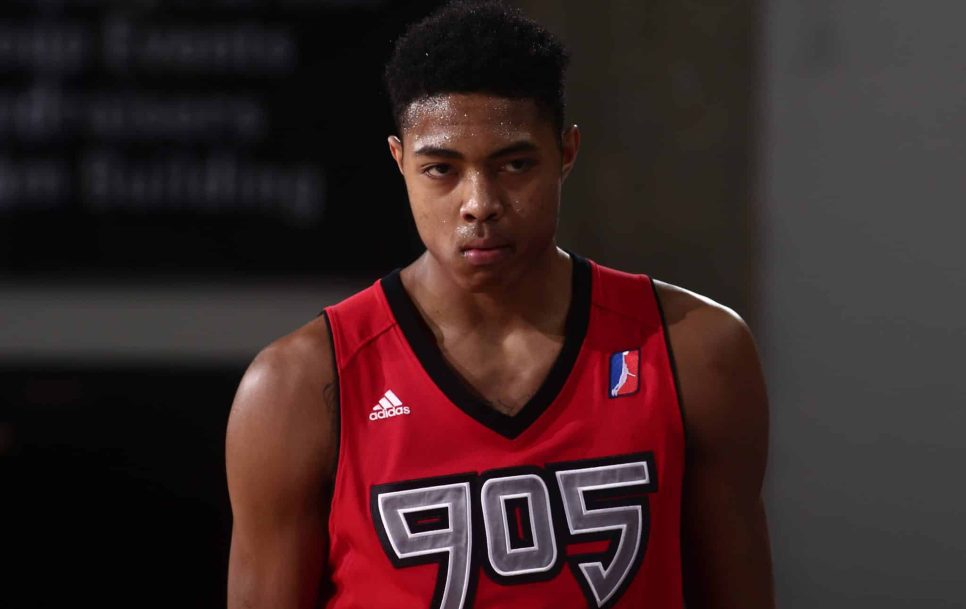From NBA mystery to wreaking havoc in European clubs
One would need to resurrect the codebreaker Alan Turing to understand Bruno Caboclo. Looking back at the past, what European basketball fans are witnessing now is not at all surprising.
The Brazilian’s abilities are unquestionable, and his weakest link is his mind. If Caboclo could improve his basketball IQ, he would be a dominant force in European basketball.
Instead, his first and so far only EuroLeague season unfolded in such a way that, while Partizan Belgrade occasionally enjoyed the stunning Caboclo, there were many more evenings when head coach Željko Obradović turned redder in the face than usual from yelling because the Brazilian failed to follow his orders or made foolish mistakes.
Caboclo would listen with a blank stare and sit on the bench. It seemed he couldn’t care less about what the legendary coach was saying.
The 28-year-old power forward or center is inconsistent on and off the court. Last summer, he signed with the Italian club Reyer Venezia but never showed up. He tried to return to the NBA and eventually landed in Partizan.
This off-season, there has been much speculation about whether Caboclo will continue with the Serbian powerhouse. It seems the player will leave, and his new club could be Hapoel Tel Aviv, which is reportedly willing to pay him one and a half million dollars per season.
Given that Caboclo is the kind of player who is either a hit or a miss, such a large salary in the context of European basketball seems unwise.
But what do I know? I haven’t worked a single day in top-level basketball.
At the same time, Caboclo’s turmoil with European clubs is unsurprising if you know his background. A little over ten years ago in Brazil, he changed clubs two days before the season started. Why? Because another team offered the talent from a poor family a lot of money.
Remarkable physical attributes
Caboclo first became prominent in the mainstream basketball media in the summer of 2014, when the Toronto Raptors selected the 208 cm tall player with a 231 cm wingspan as the 20th pick in the NBA draft. For comparison, Real Madrid’s giant Walter Tavares has a wingspan of 236 cm, but the African is 12 cm taller than Caboclo.
The NBA was shocked. Caboclo was almost a complete enigma, known only to come from São Paulo, possess great physical potential, and be very raw.
Or, as ESPN’s international expert Fran Fraschilla said: “He’s two years away from being two years away.” The expert later explained that his now-infamous quote simply meant that Caboclo wasn’t ready to play in the NBA.
In other words, Caboclo was a total lottery ticket from whom nothing was expected unless you were involved with the Raptors.
At the same time, Caboclo’s unexpected rise made sense because, in Brazil, he had suddenly emerged from nowhere into someone. Two years before the draft, the big man experienced a massive growth spurt, and local coaches couldn’t believe how the shortest boy in his age group had become nearly two-meter-tall with a 227 cm wingspan.
It seemed impossible, but it wasn’t because his coach measured it three times in disbelief and got the same result each time.
In addition to his impressive measurements, Caboclo had very good coordination and silky shooting touch for his size. He shone at the NBA talent camp Basketball Without Borders (BWB), where he was named MVP.
His successful BWB performance caught the attention of the Raptors’ general manager, Masai Ujiri. In December 2013, the NBA’s only Canadian team went to Brazil to investigate the talent, and the team’s head of international scouting, Patrick Engelbrecht, met with André Germano, who knew Brazilian youth basketball inside and out and shared information and his observations about Caboclo with the Raptors.
One of these remarks was a prediction that Caboclo was likely a late bloomer both physically and mentally. This did not deter the Raptors.
Two teams, two visions
Although Ujiri wanted to keep Caboclo only to the Raptors, the Indiana Pacers also pursued the Brazilian. The two teams had completely different visions for the talented player’s future.
The Pacers wanted to send Caboclo to Europe for three years to see if he would become NBA-ready.
The Raptors wanted to bring Caboclo to Toronto immediately and test him out in the NBA. Naturally, the player and his club liked this plan more.
While Caboclo usually played a lot, he was sparsely used in the months leading to the 2014 draft. The Raptors asked his club Pinheiros to help hide him from others so no one could figure Caboclo out.
Of course, the Raptors didn’t have the complete picture either. They just had more information than others.
Clearly, if Caboclo doesn’t get things sorted out in his head quickly, his NBA dream is over. In seven seasons, he played 107 games but got significant playing time only with the Memphis Grizzlies.
In the 2018/19 season, his averages of 8.3 points and 4.6 rebounds again showed that Caboclo’s skills should not be doubted. But he was and still needs to be more consistent so that you can rely on him.
Caboclo’s professional career has seen just one and a half good seasons. In 2021/22, he returned to São Paulo and was crowned MVP of the Basketball Champions League Americas and the Brazilian Championship.
He then tried to return to the NBA through the G-League but ended up in Germany with Ratiopharm Ulm in early 2023. Caboclo was dominant in the Bundesliga and the EuroCup and surprisingly helped Ulm become the German champion.
Who knows, maybe Germano’s prediction will come true, and hopefully, Caboclo won’t be remembered as a player whose great potential remained largely unrealised when he hangs up his sneakers.







